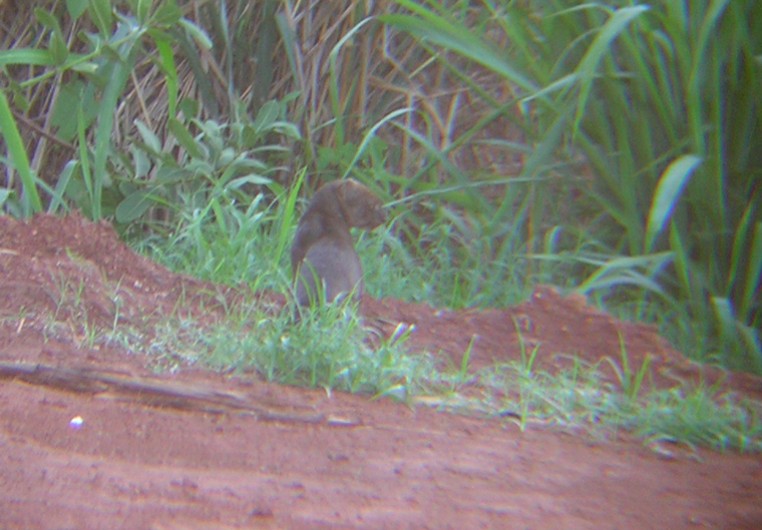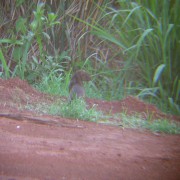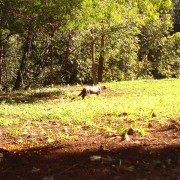Biodiversity
 Jaguarundi
Puma yagouaroundi | Lacépède, 1809
Jaguarundi
Puma yagouaroundi | Lacépède, 1809

Characteristics: Species ranging between 48.8 and 77,5cm in length, with an average tail length of 41,9cm. It has relatively short legs, a small, elongated and flattened head, and small round ears. It has a uniform color, which can be dark-brown/black, gray or yellowish red.
Distribution: From Southern Texas to a few regions of Argentina. In Brazil, it is not found in Southern Rio Grande do Sul.
Habitat: Tropical and subtropical forests, savanna, "caatinga" scrublands, wetlands, and secondary vegetation.
Habits: Diurnal, nocturnal, and terrestrial species, and although usually solitary, it may be found in pairs.
Diet: Carnivorous, mostly feeding on small rodents, birds, reptiles, and amphibians.
Breeding: The gestation period is 72 to 75 days, and an average of 2 cubs are born.
In the UFRA area: This mammal is considered rare at the studied farms, as was rarely reported. Its spatial distribution was restricted to organic sugarcane fields, forests in spontaneous regeneration, and restored native forests. The species was seen, directly and indirectly, wandering and moving through the plots of the crop, likely after prey. The sightings show that when threatened it seeks shelter instantly in the sugarcane field.





